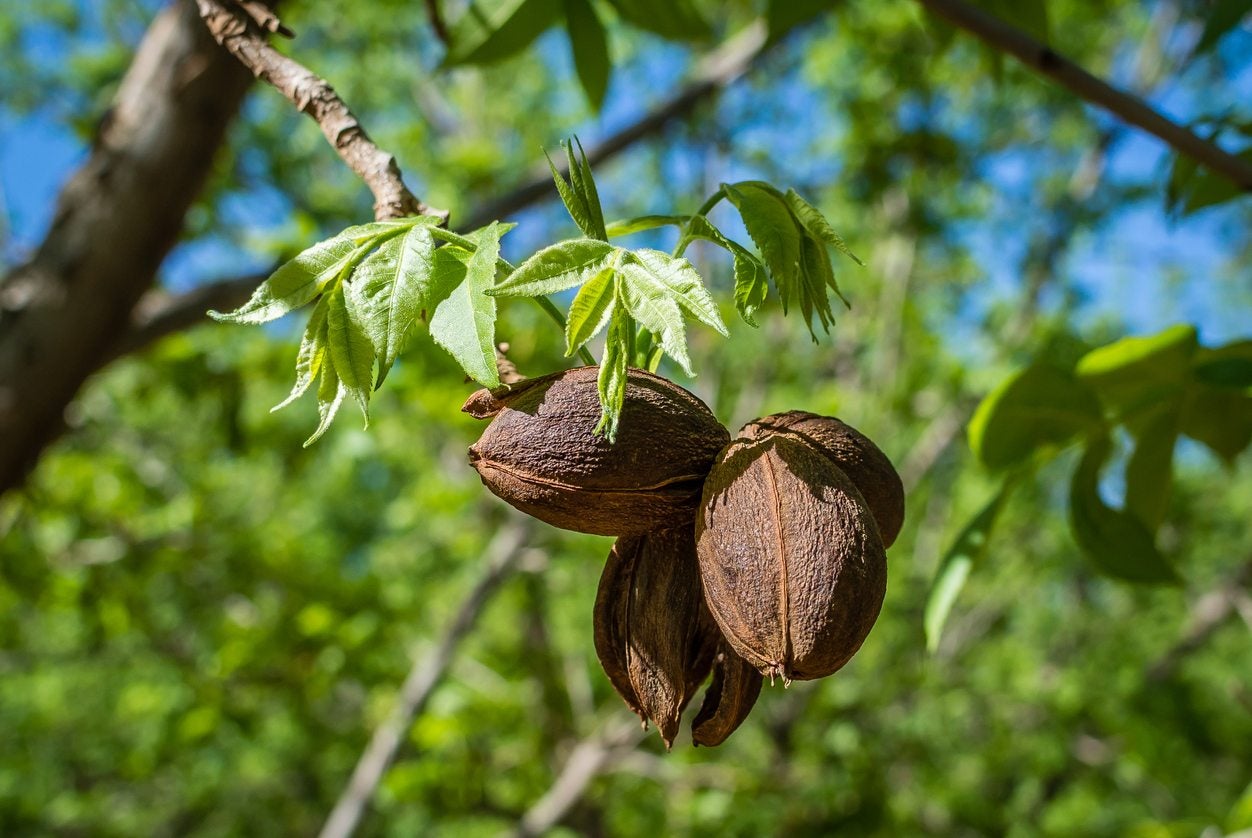Zone 8 Nuts: Tips On Growing Nuts In Zone 8 Gardens


The hardest part of growing nuts in zone 8 is selecting among the great zone 8 nut trees available in commerce. Not every nut tree thrives in zone 8, but you’ll find plenty of nuts for zone 8. Here is a rundown on zone 8 nuts with tips on how to grow nut trees in zone 8.
Zone 8 Nut Trees
The U.S. Department of Agriculture put together the hardiness zone map based on the lowest winter temperature in each area. Zone 8 regions get temperatures that drop to 10 degrees F. (-10 C.). Lots of zone 8 nut trees thrive in the region’s moderate temperature. These include classic nut trees like:
Hickory and pecan trees can also grow happily as zone 8 nut trees. When you are planning on growing nuts in zone 8, you’ll have to consider more than the temperature. To produce nuts, the trees must get a specified number of chill hours every year. A chill hour is an hour when the temperature dips below 45 degrees F. (7 C.). The number of chill hours needed for trees to grow nuts for zone 8 varies from species to species. The number of chill hours in a hardiness zone can also vary wildly. Ask your local garden store or university extension how many chill hours your area gets. Then find a zone 8 nut tree that would be happy there. Almonds, for example, need between 500 and 600 chill hours, while chestnuts only need 400 to 500. Hazelnuts need a lot, 800 to 1,200, which may eliminate them from the list of possibilities. Pecans require between 550 and 1,550, depending on the cultivar. When you are thinking about how to grow nut trees in zone 8, don’t forget to consider your garden’s exposure. Most of these trees do best when planted in full sun sites. Almost all prefer a site with excellent drainage. You’ll also want to consider the size. You’ll do better putting an almond tree in a small garden than a walnut tree. The latter grows over three times as tall. Other nut trees, like hazelnut, are more like bushes and quickly reach mature size. Also, think about the rate of growth. Slower growing trees like hickories demand more patience than fast growers like chestnuts.
Gardening tips, videos, info and more delivered right to your inbox!
Sign up for the Gardening Know How newsletter today and receive a free copy of our e-book "How to Grow Delicious Tomatoes".

Teo Spengler is a master gardener and a docent at the San Francisco Botanical Garden, where she hosts public tours. She has studied horticulture and written about nature, trees, plants, and gardening for more than two decades. Her extended family includes some 30 houseplants and hundreds of outdoor plants, including 250 trees, which are her main passion. Spengler currently splits her life between San Francisco and the French Basque Country, though she was raised in Alaska, giving her experience of gardening in a range of climates.